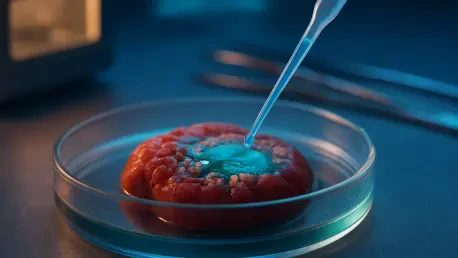If bacteria aren’t the whole story of the tumor microenvironment, what crucial signals are being missed from fungi that quietly occupy the same space yet account for only a sliver of the sequencing reads but a disproportionate share of immune cues and clinical outcomes? That challenge has gained force as researchers report that fungi constitute roughly 4%–13.3% of tumor microbial reads while appearing across many cancers and aligning with distinct immune states. The figures sound modest, yet the implications keep expanding.
A second surprise lies in the historical blind spot. For years, fungal reads in tumor datasets were dismissed as contamination, and pipelines were tuned to profile bacteria. As analytical methods improved, signals that survived negative controls, orthogonal assays, and spatial mapping began to look less like noise and more like biology. The lens widened, and the tumor ecosystem gained another dimension.
Why This Story Matters
Cancer care increasingly hinges on the tumor microenvironment—the neighborhoods of immune, stromal, and microbial actors that steer response or resistance. Multi-kingdom ecology reframes that landscape by placing fungi alongside bacteria, viruses, and archaea, and by tracing how their interplay shapes inflammation, antigen presentation, and therapy sensitivity. Such integration shifts attention from abundance to influence.
Across lung, breast, colorectal, pancreatic, and other solid tumors, fungi are not only detectable—they are metabolically active and taxon-specific. Candida, Malassezia, and Aspergillus recur, yet each maps to different tissues and immune tones, linking mycobiome composition to heterogeneity in prognosis and immunotherapy response. That specificity raises the prospect of mycobiome-informed stratification in precision oncology.
Skeptics asked whether the field was chasing ghosts. However, convergent detection has undermined the contamination narrative. Internal transcribed spacer (ITS) and 18S rRNA sequencing, shotgun metagenomics, fluorescence in situ hybridization, qPCR, and even single-cell datasets have pointed to genuine intratumoral fungi. When signals co-localize with tumor nests, stroma, or immune niches, the case strengthens: location matches function.
Inside The Tumor Ecosystem
Distribution offers the first thread of the story. Fungal reads appear in primary tumors and adjacent mucosa, and in some settings in blood and stool, forming a gut–tumor axis that transmits metabolites and immune modulators. Spatial profiling adds nuance, showing fungi near myeloid cells or within biofilm-like structures where microbial partners exchange resources and shield one another from host defenses.
Mechanism offers the second thread. Fungal β-glucans engage Dectin-1 and signal through CARD9, tuning myeloid programs that influence antigen presentation and inflammation. IL-1β can rise in this milieu, recruiting and conditioning myeloid-derived suppressor cells that blunt T cell function. In parallel, carcinogenic metabolites—aflatoxins are the emblematic case—can drive DNA damage, while barrier disruption, nutrient competition, and metabolic cues reshape tumor cell fitness and immune tone.
Context complicates the picture. In some microenvironments, fungi may be neutral or even restrain harmful bacterial overgrowth, altering the risk calculus. Species, tissue, and microbial partners matter. “Effects flip with context,” a tumor immunologist said. “The same genus can dampen or inflame, depending on who else is in the room.”
Cross-kingdom dynamics tie these threads together. Fungi and bacteria form partnerships and rivalries that influence colonization, biofilm architecture, and metabolite flux. Multi-kingdom network models—integrating fungi, bacteria, viruses, archaea, and host pathways—have begun to explain why a tumor with similar bacterial loads can behave differently when specific fungi are present. The ecosystem, not a single taxon, sets the rules.
Tools, Proof, And Early Moves
Rigor has become the field’s backbone. Standardized ITS, 18S, and shotgun metagenomic pipelines with reagent blanks and environmental controls reduce false positives. Orthogonal validation—FISH with taxon-specific probes, culture-independent capture, and targeted qPCR—helps confirm low-biomass signals. Single-cell and spatial omics now detect fungal reads in situ and map microbe–cell contacts, revealing which immune states coincide with particular taxa.
Clinical translation has begun with pragmatic probes. Repurposed azoles—itraconazole and ketoconazole—entered trials as antifungals with potential anti-angiogenic or Hedgehog pathway effects, providing a window into whether dampening fungi alters immunity or tumor growth. Early signals have been mixed but informative; combination strategies appear more promising than monotherapy. “If fungi tune myeloid tone, antifungals could unmask checkpoint responses,” one investigator noted.
Therapeutic avenues are widening. Heat-killed fungi and defined fungal components are under study as immune adjuvants that could prime antitumor responses with controlled safety. Nanoformulations aim to localize antifungal activity while limiting toxicity. Engineered strains are being designed to deliver payloads or modulate metabolites inside tumors, though governance and containment remain paramount. In diagnostics, composite fungal–bacterial–host signatures, paired with spatial features, are being tested to predict immunotherapy response better than single-kingdom markers.
Policy and equity questions run alongside the science. Antifungal resistance surveillance is essential if oncology begins to use these drugs more widely. Toxicity thresholds for fungal products must be defined, particularly for vulnerable patients receiving cytotoxic therapy. Access matters, too: without standardized sampling, shared SOPs, and common databases, biomarker performance will vary across sites, reinforcing disparities.
What Comes Next
The immediate path forward rested on three moves: build robust evidence, embed mycobiome endpoints in trials, and design interventions that fit tumor context. Study designs prioritized matched sampling across tumor, mucosa, stool, and blood, with strict negative controls. Parallel ITS/18S and shotgun pipelines, cross-validated by FISH and qPCR, addressed contamination head-on. Perturbational studies—antifungals, targeted depletion, or engineered colonization—aligned with longitudinal immune readouts to clarify causality.
Trial architecture evolved. Oncology studies began stratifying by fungal taxa and immune state, testing antifungals with checkpoint blockade or myeloid-targeted agents in immune-cold tumors. Go/no-go gates incorporated predefined biomarkers, immune modulation metrics, and tolerability. Indications with prominent fungal signatures and suppressive TMEs—select pancreatic and colorectal settings—received early priority.
Infrastructure tied it together. A tumor fungal ecosystem database, coupled with AI models that integrate multi-kingdom microbes, spatial maps, and host multi-omics, allowed hypotheses to be tested across cohorts. Safety frameworks governed resistance, toxicity, and ecological spillover. With these guardrails, the field moved from correlation to causation, and from scattered signals to actionable tools. The promise was no longer theoretical: mycobiome-aware strategies offered a realistic complement to precision oncology when built on rigorous methods, transparent governance, and cross-disciplinary collaboration.









